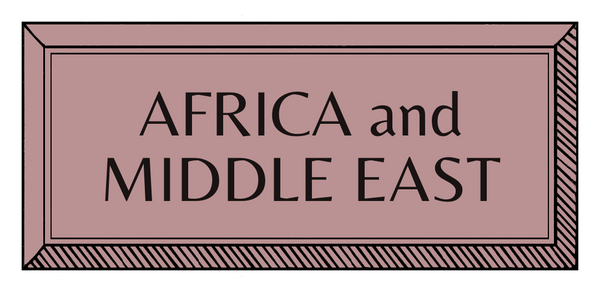CRAFT STORIES | AFRICA | MOROCCO | TEXTILES
YSL: Moroccan Silk Threads

© Rizolli 'YSL Lexicon: An ABC of the Fashion, Life, and Inspirations of Yves Saint Laurent'.
Sara Pierdonà delves into Moroccan weaving and embroidery – an art that reflects a rich blend of Berber, Arab and Andalusian influences. From ceremonial garments adorned with sfifa trimmings, to Yves Saint Laurent’s modern adaptations, silk threads have woven themselves into the country’s cultural and artistic heritage. While traditional techniques face challenges in the modern world, associations like Timodontes are keeping these crafts alive, preserving Morocco's ancestral skills and empowering local artisans.
Moroccan textiles, with their intricate patterns and vibrant colours, draw on a very long tradition in which Berber, Arab and Andalusian influences converge. Each region possesses an extremely sophisticated local heritage, handed down through generations and integrated into daily life, whose functions are not only practical but also symbolic, with meanings hidden in the patterns and colours. Yves Saint Laurent was one of the creatives who most captured the beauty of this immense tradition, evident in his timeless collections, and the Jardin Majorelle Foundation, which encourages craftsmanship influenced by the designer's insights.
The history of textiles in Morocco is too diverse to be summarised briefly, but the history of silk use is relatively easier to trace. In 1492, the Alhambra decree expelled Jews from Spain, many of whom fled to Morocco and founded a lively, industrious community. What they brought with them was a highly developed technical knowledge of silk processing and silkworm breeding, and their virtual monopoly on gold thread and its use in embroidery.
This knowledge naturally lent itself to the creation of a very important element of the national costume, the sfifa, or trimmings, which embellished caftans and djellabas and became the preferred technique for embellishing ceremonial garments.

All images © Rizolli 'YSL Lexicon: An ABC of the Fashion, Life, and Inspirations of Yves Saint Laurent'
When Saint Laurent began to take an interest in traditional Moroccan techniques, the prosperity of communities of specialised craftsmen was threatened by the recent introduction of the thread winding and twisting machine, brought by the French in 1929. Nevertheless, the Parisians' historical appreciation for silk could not remain insensitive to the beauty of these creations, which the designer readapted according to his inspiration, making them into fashion accessories and details.
Jews exiled to Morocco are thought to have absorbed the technique of precious thread winding in Europe during the Middle Ages, from where many examples of ecclesiastical vestments decorated with woven metal come. Indeed, there are illuminated manuscripts showing weavers engaged in a warp-tensioning method similar to the Moroccan one, with the thread stretched between two poles.
Northern Morocco, with its abundance of mulberry trees, was an ideal environment for breeding silkworms from which silk was obtained. This was then dyed and wound onto bobbins, using the characteristic technique; equally peculiar and secret were the steps for applying gold leaf, in case a more precious weave was desired.
When Saint Laurent discovered Morocco, the potential of silk thread was obvious to him, silk belonging quintessentially to the concept of French elegance. Today, the reference point for the sfifa is the Timodontes association, which promotes the preservation of craft techniques and encourages the autonomy of women weavers.

Yves Saint Laurent in Morocco, photographed by Pierre Bergè, © Musée Yves Saint Lauren, Paris.
Stylist Stephan Janson, a member of Yves Saint Laurent's entourage from a very young age, collaborates with them (among others): "Morocco has also influenced me a lot. My first collection was entirely inspired by the mendil, a rectangle of cloth that Moroccan women wrap around their bust and which has a powerful symbolic meaning, serving to indicate that 'they are dressed' and can therefore be seen in public. I really appreciate the Timodontes project, it is creating work around Marrakech by saving a wonderful technique that is in danger of extinction."
As for what YSL and Pierre Bergè have created with Jardin Majorelle, it is just as commendable: the place is often visited by fashionistas in search of a beautiful setting, who overlook the enormous positive impact such an association has created in the local context. Jardin Majorelle's creations, including handbags and belts, put the ancestral technical skills of local craftsmen to good use, but following Yves' aesthetic intuition.’ (Fun fact, from the Majorelle Gardens comes a specific color, the iconic Majorelle blue of the walls.)
And if that still wasn't enough, delve into the story of Tamy Tazi, the Moroccan designer who introduced Saint Laurent to Moroccan needlework and Tetouan' silk chiffon and modernised the caftan to become the exquisite garment it is today.

Yves Saint Laurent in Morocco, photographed by Pierre Bergè, © Musée Yves Saint Lauren, Paris.
Words by Sara Pierdonà
Images from the Rizolli 'YSL Lexicon: An ABC of the Fashion, Life, and Inspirations of Yves Saint Laurent' and the Musée Yves Saint Lauren, Paris.









































